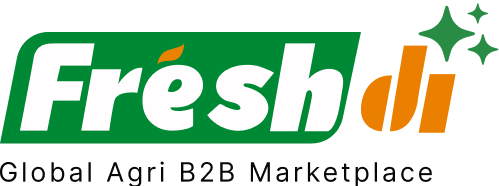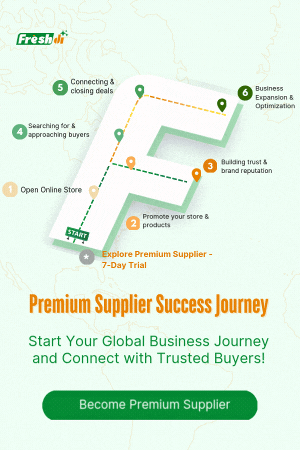Introduction – Exploring United States’s Reputation for Quality Flour
Ever wondered why the United States is considered a global leader in flour production? It’s not just a coincidence—it’s a combination of nature’s gifts and human expertise.
Thanks to its vast and varied geography, the U.S. enjoys some of the best climates and soil conditions for wheat farming. Regions like the Great Plains—often dubbed the “breadbasket of the world”—are perfect for cultivating hard and soft wheat varieties. Kansas, Oklahoma, and parts of the Midwest consistently churn out high-quality wheat that serves as the backbone for premium flour.
But it’s not just about geography. American farmers have honed their craft over generations, blending traditional farming wisdom with cutting-edge agricultural technologies. This approach ensures consistent wheat yields and top-notch flour quality.
In 2024 alone, flour production in the U.S. reached 425.2 million hundredweight (cwt), a 1.2% increase from the year before. While it didn’t surpass the 2022 peak of 430.3 million cwt, it still reflects a strong, stable industry. Mills are operating at 86.4% of their six-day capacity—an efficiency level that many countries envy.
However, not all segments are thriving. Whole wheat flour production, for example, has hit a 10-year low in Q2 2025 due to shifting consumer trends. Still, the overall outlook remains bright—and if you’re in the business of sourcing flour, you’re in the right place.
Defining & Verifying Flour Excellence in United States
So, what really sets high-quality flour apart from the rest?
Key Quality Markers to Watch For
When sourcing flour from the U.S., look for these critical indicators:
- Protein Content: Determines gluten strength, crucial for baking functionality.
- Ash Content: Reflects milling precision—lower ash usually means purer flour.
- Moisture Level: Affects shelf life and usability.
- Gluten Strength: Influences dough elasticity and baking performance.
Certifications That Matter
Several certifications help verify that you’re getting top-notch flour:
- USDA Organic
- Non-GMO Project Verified
- Food Alliance Certified
- ISO 22000 (Food Safety Management)
- HACCP Compliance
- Kosher & Halal Certifications
Buyers on platforms like Freshdi often issue RFQs that mention specific certifications or quality attributes. This helps ensure that suppliers meet strict sourcing criteria.
Regional Flour Nuances
The U.S. isn’t one-size-fits-all when it comes to flour. For example:
- Hard Red Winter Wheat from Kansas is ideal for bread due to its strong gluten.
- Soft Red Winter Wheat from the Midwest suits pastries and cakes.
- Durum Wheat from North Dakota is prized for pasta.
Understanding these regional specialties can help you source flour that perfectly matches your end product requirements.
Top 6 Verified Flour Suppliers in United States – Setting the Benchmark
We’ve scoured the U.S. flour industry and analyzed supplier performance, export success, Freshdi feedback, and certifications. Here are the Top 6 Flour Suppliers in United States in Quarter 4 of 2025:
-
Noorwe
Known for its consistent export quality and wide range of flour types. Noorwe specializes in all-purpose and specialty flours, serving both domestic and international markets. -
Fast Freight Logistics LLC
A logistics-savvy supplier that ensures timely delivery of bulk flour orders. Their integrated supply chain and traceability systems make them a reliable partner. -
R S Brothers LLC
Renowned for premium wheat flour, R S Brothers LLC stands out for its strict adherence to quality certifications and consistent buyer ratings on Freshdi. -
QVIN
Diversified in grains but also a strong player in the specialty flour space. QVIN is pushing boundaries with innovative flour blends and functional flours. -
Farrago Mind
A supplier with a focus on sustainable and traceable flour production. Farrago Mind is ideal for buyers looking for ethical and environmentally friendly sourcing. -
PK Luxuries
Offers a wide selection of flours including all-purpose and whole wheat. Known for competitive pricing and high reliability in fulfilling large-scale RFQs.
Dynamic Ranking Note
It’s worth noting that supplier rankings can shift based on real-time performance, export volumes, and buyer feedback. Platforms like Freshdi periodically update their “Suppliers of the Month” or “Suppliers of the Quarter” to reflect these changes, offering fresh insights into market leaders.
Market Navigation – Navigating Market Trends for Premium Flour
Let’s face it—today’s flour market is not what it used to be.
Premium and Certified Products Are in Demand
Consumers now want flour that does more than just bake bread. They’re looking for functional flours—those enriched with protein, fiber, and vitamins. This health-focused shift is driving market growth. The global functional flour market is expected to hit USD 110.93 billion by 2030, growing at a CAGR of 7.63%.
Specialty flours made from ancient grains like quinoa, spelt, and teff are also trending. These flours offer unique flavors and health benefits, and they’re especially popular among health-conscious and gluten-sensitive consumers.
Traceability Is No Longer Optional
Thanks to tech advancements, traceability is becoming a must-have. From blockchain to QR codes, consumers want to know where their food comes from.
The global food traceability market is projected to grow to USD 38.5 billion by 2029. This demand is pushing flour suppliers to adopt transparent practices, which in turn builds consumer trust.
Some suppliers even use IoT sensors to monitor conditions throughout the supply chain. That means you can track your flour from the field to your factory floor—no guesswork involved.
Sustainability is Shaping Buying Decisions
More consumers are supporting sustainable brands. Flour producers are catching on, offering certified sustainable flour like ADM’s HarvestEdge Gold—sourced ethically and certified by the Food Alliance.
Buyers are also leaning toward suppliers who use eco-friendly farming and milling practices, making sustainability a competitive edge.
Challenges in the Market
Of course, it’s not all smooth sailing. Droughts and rising wheat prices have put pressure on the industry. In 2023, high-protein wheat prices jumped by 18%, impacting milling margins.
Still, these challenges are spurring innovation. Companies are investing in R&D to improve milling techniques and develop new flour blends.
Opportunities for Exporters
Despite domestic challenges, export opportunities are heating up. U.S. high-protein flour exports to Canada grew by 38% in 2023. If you’re in the export game, now’s a great time to tap into growing international demand.
Conclusion – Sourcing Quality Flour Strategically
To wrap it up, the United States remains a powerhouse for high-quality flour thanks to its ideal growing conditions, innovative farming practices, and strong supplier ecosystem.
If you’re a buyer, your sourcing strategy should focus on:
- Knowing your product needs (bread, pastry, specialty, etc.)
- Verifying supplier credentials and certifications
- Staying ahead of consumer trends in nutrition and sustainability
- Leveraging platforms like Freshdi to access verified suppliers, track RFQ trends, and ensure transparent sourcing
Freshdi isn’t just a marketplace—it’s your strategic partner for smarter sourcing. From real-time supplier reviews to dynamic rankings, it helps buyers like you make confident purchasing decisions.
Key Takeaways
- The U.S. leads in flour production due to fertile land, climate, and agri-tech.
- Quality flour depends on protein content, certifications, and traceability.
- Premium and functional flours are in high demand globally.
- Traceability and sustainability are shaping consumer purchasing decisions.
- Freshdi empowers buyers with tools for supplier verification and RFQ trends.
Checklist for Flour Buyers
✅ Identify flour type needed (e.g., bread, cake, functional, specialty)
✅ Check for necessary certifications (USDA Organic, Non-GMO, etc.)
✅ Prioritize suppliers with traceability systems
✅ Analyze market trends via platforms like Freshdi
✅ Monitor dynamic supplier rankings for top performers
Future Outlook
The U.S. flour industry is poised for growth, especially in premium and functional categories. As consumers demand more transparency and nutrition from their food, suppliers will need to innovate and adapt. Smart buyers will stay ahead by leveraging digital platforms, dynamic supplier rankings, and real-time market insights.
How Freshdi Empowers Buyers
- Verified supplier profiles with export data
- Real-time RFQ trends to understand market demand
- “Supplier of the Month/Quarter” rankings
- Direct messaging and negotiation features
- Access to insights on sustainability, traceability, and certification
References
- Top 9 Wheat Flour Suppliers in United States – Freshdi
- Whole Wheat Flour Production Hits New Low – Baking Business
- Functional Flour Market Forecast – GlobeNewswire
- Ancient and Specialty Grain Flour Market – HTF Market Intelligence
- Global Food Traceability Market Forecast – PR Newswire
- Sustainable Flour – ADM
- High Protein Flour Market – Intel Market Research
FAQs
1. What type of flour is best for baking bread?
Hard red winter wheat flour is ideal due to its high protein and gluten content.
2. How can I verify if a flour supplier is trustworthy?
Check certifications, export history, and buyer reviews on platforms like Freshdi.
3. What’s the difference between functional flour and regular flour?
Functional flours have added nutritional benefits—like more fiber or protein—while regular flour is typically refined.
4. Are traceable flours more expensive?
They can be, but the added value in transparency and consumer trust often justifies the cost.
5. Can I source specialty grain flours from the U.S.?
Absolutely. Many U.S. suppliers offer flours made from ancient grains like teff, quinoa, and spelt.


